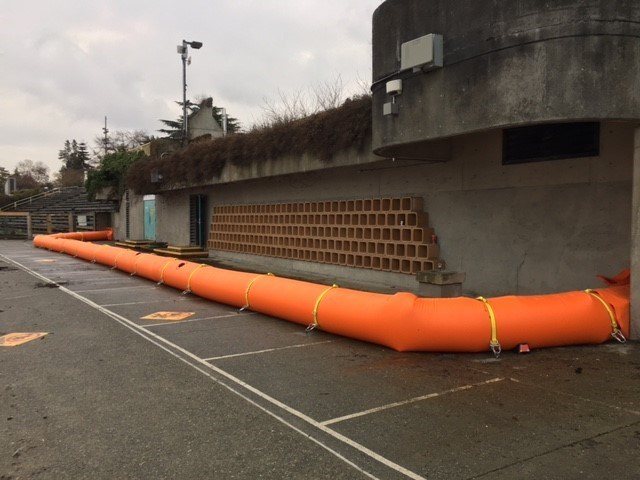Vancouver is bracing itself for another king tide.
The last king tide caused floods around Vancouver and even created a small island with floating logs in False Creek. The flooding also submerged several sections of the Stanley Park Seawall and Kitsilano Pool.
In anticipation of another king tide, the Vancouver Board of Parks and Recreation closed the Stanley Park seawall yesterday (Jan. 20) and asks locals to stay away from the water's edge during surges.
In addition to laying sandbags, the Park Board has also placed a tiger dam at Kitsilano Pool.
The large orange tube is "designed to prevent water damage to the pool's mechanical room," explains the Park Board, adding that installing the tiger dam "provides an opportunity to pilot a new flood protection approach."
How does a tiger dam work?
A tiger dam is made up of custom-made water-filled tubes and acts as a flood barrier.
Standing about a meter high, sandbags are stacked along the dam which is anchored to the ground.
Though a tiger dam is currently being used to protect Vancouver's seaside pool, this type of dam was also used in 2021 to prevent further flooding in Abbotsford.




